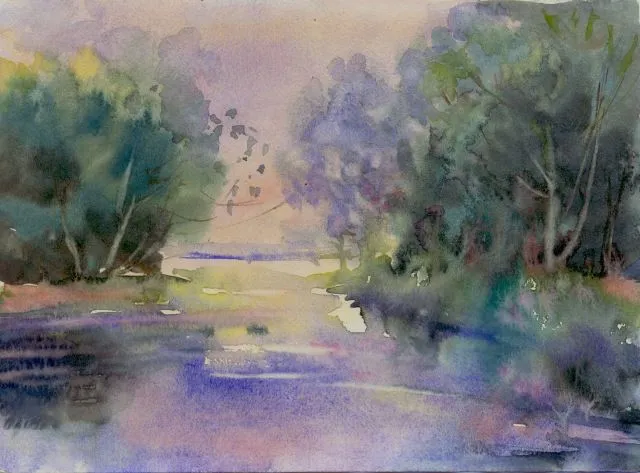Let your imagination take you down mystery lane and you will be surprised what you can paint.
A watercolour by Ada Fagan:

Some people think painting water scenes is hard, but it isn’t if you:
- Paint the sky and land first.
- Then copy what is in the sky and on land, down in the water area.
Aaah, but that’s not all!
What happens to those reflections in the water?
- They blur and become distorted according to the weather and wind.
- Allow your reflections in the water to blur and ripple.
- Blurring means you don’t have to portray the reflections to perfection.
- And blurring allows you to do your thing, without worry if you mess up.
Tip:
To create ripples, wait until the paint is partly dry and then pull a clean partly wet thin blush through the paint to remove paint. And ripples appear better when you apply your ripples to dark painted areas.
Blurring allows imagination to run rite!
As a watercolour artist:
Wetting your paper (both sides for counter action of cockling) and then dropping in colours and allowing them to mingle, you create lovely blurry scenes.
- You only leave a few spots and shapes, for fine detail where necessary, to catch the eye.
- Blurring suggests action and possibilities of what’s occurring.
And for the general public:
- When paintings are full of fine precise detail, everything is so clear and neat that there is nothing left for imagination. So there is no fun in using one’s imagine. The painting becomes boring over time.
- People are attracted to blurry scenes, because blurring has an emotional impact on the soul. Blurring also creates sensational impact.
- The little statements of detail set their minds dreaming up stories about the scene and blur is left for the imagination to what people may think is happening there.